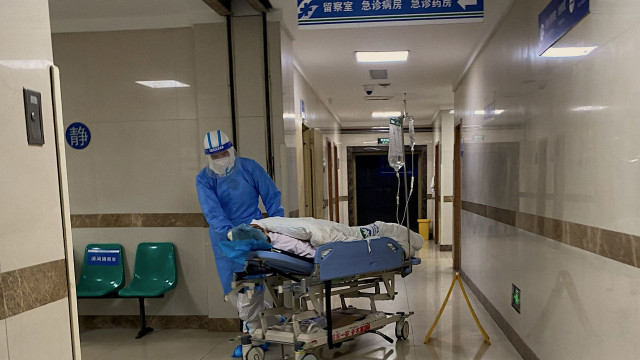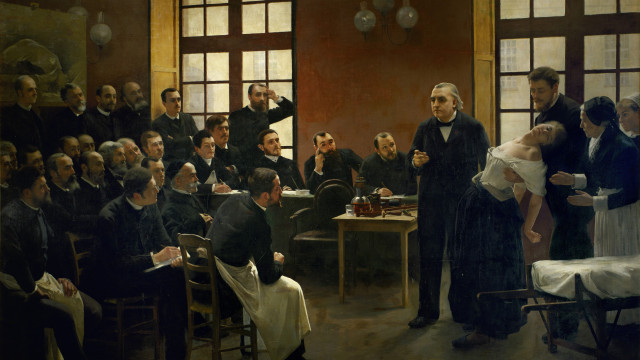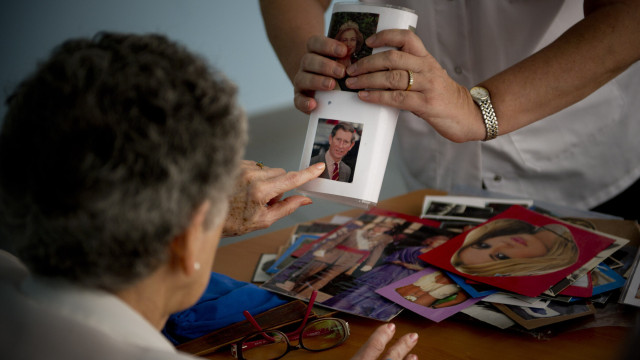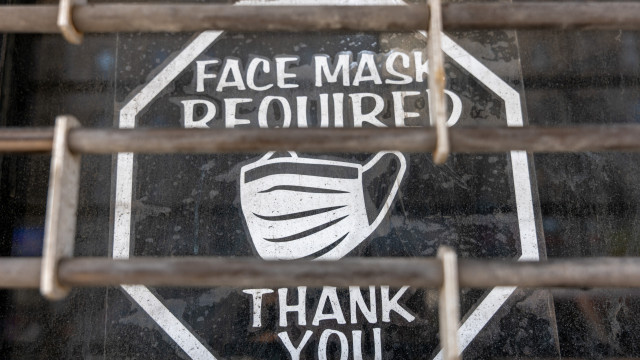





























See Also
See Again
© Shutterstock
0 / 30 Fotos
Introducing Tomorrow.Bio
- Tomorrow.Bio is a German company whose dynamic founder, Emil Kendziorra, used to work in the field of cancer research.
© Getty Images
1 / 30 Fotos
The founder
- According to one BBC article, Kendziorra decided to switch fields because he found the progress on curing cancer “far too slow.”
© Getty Images
2 / 30 Fotos
Work so far
- So far, the company has cryopreserved (frozen) “three or four” people and five pets; they have another 700 future clients already signed up.
© Shutterstock
3 / 30 Fotos
Expansion
- During 2025, they have plans to expand their operation to cover the whole of the US. Not everyone is a fan, however.
© Shutterstock
4 / 30 Fotos
Lack of proof
- Indeed, it is difficult to believe in the project’s potential success, given there is currently no proof that organisms with brain structures as complex as humans’ can be restored after death.
© Shutterstock
5 / 30 Fotos
How it works
- The cryopreservation process at Tomorrow.Bio works as follows. First, the patient must sign up with the firm.
© Shutterstock
6 / 30 Fotos
Ambulance dispatch
- Once a doctor has confirmed that the patient is within the final days of their life, the team dispatches a special ambulance to the patient’s location.
© Shutterstock
7 / 30 Fotos
Cryopreservation begins
- As soon as the patient is legally pronounced dead, the team moves them to the ambulance, where the process of cryopreservation begins.
© Getty Images
8 / 30 Fotos
Cooling the body down
- The cryopreservation process itself involves cooling down the body to sub-zero temperatures and supplying it with cryptoprotective fluid.
© Shutterstock
9 / 30 Fotos
Specific cooling curve
- The cooling curve is very specific, and it involves cooling the body down very quickly until around -125°C (257°F), and then very slowly from -125°C to -196°C (384.8°F).
© Shutterstock
10 / 30 Fotos
Transfer to Switzerland
- Once the body is at the right temperature, it is transferred to a storage unit in Switzerland, where, according to the team, it can be stored indefinitely.
© iStock
11 / 30 Fotos
The big idea
- The idea is that the cryopreservation can be reversed once scientists have found a cure for whatever caused the patient’s death in the first place.
© Shutterstock
12 / 30 Fotos
A second chance
- By warming the patient back up and potentially bringing them back to life, doctors would then have the opportunity to cure the original illness.
© Shutterstock
13 / 30 Fotos
Inspiration
- The work of this company has been inspired by cases in which hearts have stopped in freezing temperatures and then successfully restarted later.
© Shutterstock
14 / 30 Fotos
Criticisms
- The cryopreservation service on offer at Tomorrow.Bio has nonetheless come under heavy fire. The main criticism leveled at the project is that there is no evidence it will actually work.
© Shutterstock
15 / 30 Fotos
No previous cases
- Indeed, until now, no one has ever been successfully revived following a process of cryopreservation, and even if they were, it’s likely they would be severely brain damaged.
© Shutterstock
16 / 30 Fotos
The process of decomposition
- As soon as a human heart stops beating, the cells in the body start to decompose, and this causes an enormous amount of damage.
© Shutterstock
17 / 30 Fotos
Expert opinion
- According to neuroscience professor Clive Coen, if the body is warmed back up after cryopreservation, all the decomposition that was underway will just resume.
© Shutterstock
18 / 30 Fotos
Alternative focus
- It is Coen’s opinion that the better focus in this field is cryogenics: the long-term cryopreservation of specific materials like tissues and organs.
© Shutterstock
19 / 30 Fotos
Freezing organs
- It would be beneficial to a number of areas of medicine if we get to the point where organs can be frozen, banked, and then used later.
© Shutterstock
20 / 30 Fotos
Financial investment
- Another argument against cryopreservation is that it is not worth the huge financial investment given the unlikelihood of success.
© Shutterstock
21 / 30 Fotos
Financial investment
- Indeed, it is easy to imagine that relatives of people who decide to undergo this process may not be too pleased that their inheritance is being blown on such a tiny chance.
© Shutterstock
22 / 30 Fotos
Explaining the resistance
- According to Kendziorra, a lot of the resistance they are seeing is due to the fact that bringing someone back from the dead seems strange.
© Getty Images
23 / 30 Fotos
Argument
- He argues that a lot of medical procedures, including organ transplants, seemed strange at first. If they work, however, it doesn’t take long for them to become mainstream.
© Shutterstock
24 / 30 Fotos
Promising research on animals
- Kendziorra also believes that there is encouraging proof within animal research that entire organisms can, in fact, transcend death.
© Shutterstock
25 / 30 Fotos
Roundworm study
- One study that he cites is related to a species of roundworm that was cryopreserved and successfully returned to full function.
© Shutterstock
26 / 30 Fotos
General trend
- Whether cryopreservation is a realistic goal or not, the interest in the field is symptomatic of a general boom in the field of life extension.
© Shutterstock
27 / 30 Fotos
Interest in longevity
- Indeed, for years now people have become increasingly interested in extending their time on earth. A particular focus has been on longevity.
© Shutterstock
28 / 30 Fotos
Influence of the COVID-19 pandemic
- Research suggests that this preoccupation with death and the desire to postpone it could be a direct consequence of the COVID-19 pandemic. Sources: (BBC)
© Shutterstock
29 / 30 Fotos
© Shutterstock
0 / 30 Fotos
Introducing Tomorrow.Bio
- Tomorrow.Bio is a German company whose dynamic founder, Emil Kendziorra, used to work in the field of cancer research.
© Getty Images
1 / 30 Fotos
The founder
- According to one BBC article, Kendziorra decided to switch fields because he found the progress on curing cancer “far too slow.”
© Getty Images
2 / 30 Fotos
Work so far
- So far, the company has cryopreserved (frozen) “three or four” people and five pets; they have another 700 future clients already signed up.
© Shutterstock
3 / 30 Fotos
Expansion
- During 2025, they have plans to expand their operation to cover the whole of the US. Not everyone is a fan, however.
© Shutterstock
4 / 30 Fotos
Lack of proof
- Indeed, it is difficult to believe in the project’s potential success, given there is currently no proof that organisms with brain structures as complex as humans’ can be restored after death.
© Shutterstock
5 / 30 Fotos
How it works
- The cryopreservation process at Tomorrow.Bio works as follows. First, the patient must sign up with the firm.
© Shutterstock
6 / 30 Fotos
Ambulance dispatch
- Once a doctor has confirmed that the patient is within the final days of their life, the team dispatches a special ambulance to the patient’s location.
© Shutterstock
7 / 30 Fotos
Cryopreservation begins
- As soon as the patient is legally pronounced dead, the team moves them to the ambulance, where the process of cryopreservation begins.
© Getty Images
8 / 30 Fotos
Cooling the body down
- The cryopreservation process itself involves cooling down the body to sub-zero temperatures and supplying it with cryptoprotective fluid.
© Shutterstock
9 / 30 Fotos
Specific cooling curve
- The cooling curve is very specific, and it involves cooling the body down very quickly until around -125°C (257°F), and then very slowly from -125°C to -196°C (384.8°F).
© Shutterstock
10 / 30 Fotos
Transfer to Switzerland
- Once the body is at the right temperature, it is transferred to a storage unit in Switzerland, where, according to the team, it can be stored indefinitely.
© iStock
11 / 30 Fotos
The big idea
- The idea is that the cryopreservation can be reversed once scientists have found a cure for whatever caused the patient’s death in the first place.
© Shutterstock
12 / 30 Fotos
A second chance
- By warming the patient back up and potentially bringing them back to life, doctors would then have the opportunity to cure the original illness.
© Shutterstock
13 / 30 Fotos
Inspiration
- The work of this company has been inspired by cases in which hearts have stopped in freezing temperatures and then successfully restarted later.
© Shutterstock
14 / 30 Fotos
Criticisms
- The cryopreservation service on offer at Tomorrow.Bio has nonetheless come under heavy fire. The main criticism leveled at the project is that there is no evidence it will actually work.
© Shutterstock
15 / 30 Fotos
No previous cases
- Indeed, until now, no one has ever been successfully revived following a process of cryopreservation, and even if they were, it’s likely they would be severely brain damaged.
© Shutterstock
16 / 30 Fotos
The process of decomposition
- As soon as a human heart stops beating, the cells in the body start to decompose, and this causes an enormous amount of damage.
© Shutterstock
17 / 30 Fotos
Expert opinion
- According to neuroscience professor Clive Coen, if the body is warmed back up after cryopreservation, all the decomposition that was underway will just resume.
© Shutterstock
18 / 30 Fotos
Alternative focus
- It is Coen’s opinion that the better focus in this field is cryogenics: the long-term cryopreservation of specific materials like tissues and organs.
© Shutterstock
19 / 30 Fotos
Freezing organs
- It would be beneficial to a number of areas of medicine if we get to the point where organs can be frozen, banked, and then used later.
© Shutterstock
20 / 30 Fotos
Financial investment
- Another argument against cryopreservation is that it is not worth the huge financial investment given the unlikelihood of success.
© Shutterstock
21 / 30 Fotos
Financial investment
- Indeed, it is easy to imagine that relatives of people who decide to undergo this process may not be too pleased that their inheritance is being blown on such a tiny chance.
© Shutterstock
22 / 30 Fotos
Explaining the resistance
- According to Kendziorra, a lot of the resistance they are seeing is due to the fact that bringing someone back from the dead seems strange.
© Getty Images
23 / 30 Fotos
Argument
- He argues that a lot of medical procedures, including organ transplants, seemed strange at first. If they work, however, it doesn’t take long for them to become mainstream.
© Shutterstock
24 / 30 Fotos
Promising research on animals
- Kendziorra also believes that there is encouraging proof within animal research that entire organisms can, in fact, transcend death.
© Shutterstock
25 / 30 Fotos
Roundworm study
- One study that he cites is related to a species of roundworm that was cryopreserved and successfully returned to full function.
© Shutterstock
26 / 30 Fotos
General trend
- Whether cryopreservation is a realistic goal or not, the interest in the field is symptomatic of a general boom in the field of life extension.
© Shutterstock
27 / 30 Fotos
Interest in longevity
- Indeed, for years now people have become increasingly interested in extending their time on earth. A particular focus has been on longevity.
© Shutterstock
28 / 30 Fotos
Influence of the COVID-19 pandemic
- Research suggests that this preoccupation with death and the desire to postpone it could be a direct consequence of the COVID-19 pandemic. Sources: (BBC)
© Shutterstock
29 / 30 Fotos
Exploring cryonics: the promise of extending life
Would you pay to come back from the dead?
© Shutterstock
Ever wondered what it might be like to come back from the dead? If so, you may be interested to know that there is a start-up in Germany offering a second a chance at life. For the small fee of US$200,000, Tomorrow.Bio offers its customers the opportunity to have their body frozen after death, with the hope that one day they can be brought back to life.
Intrigued? Check out this gallery to find out more.
RECOMMENDED FOR YOU



























MOST READ
- Last Hour
- Last Day
- Last Week








